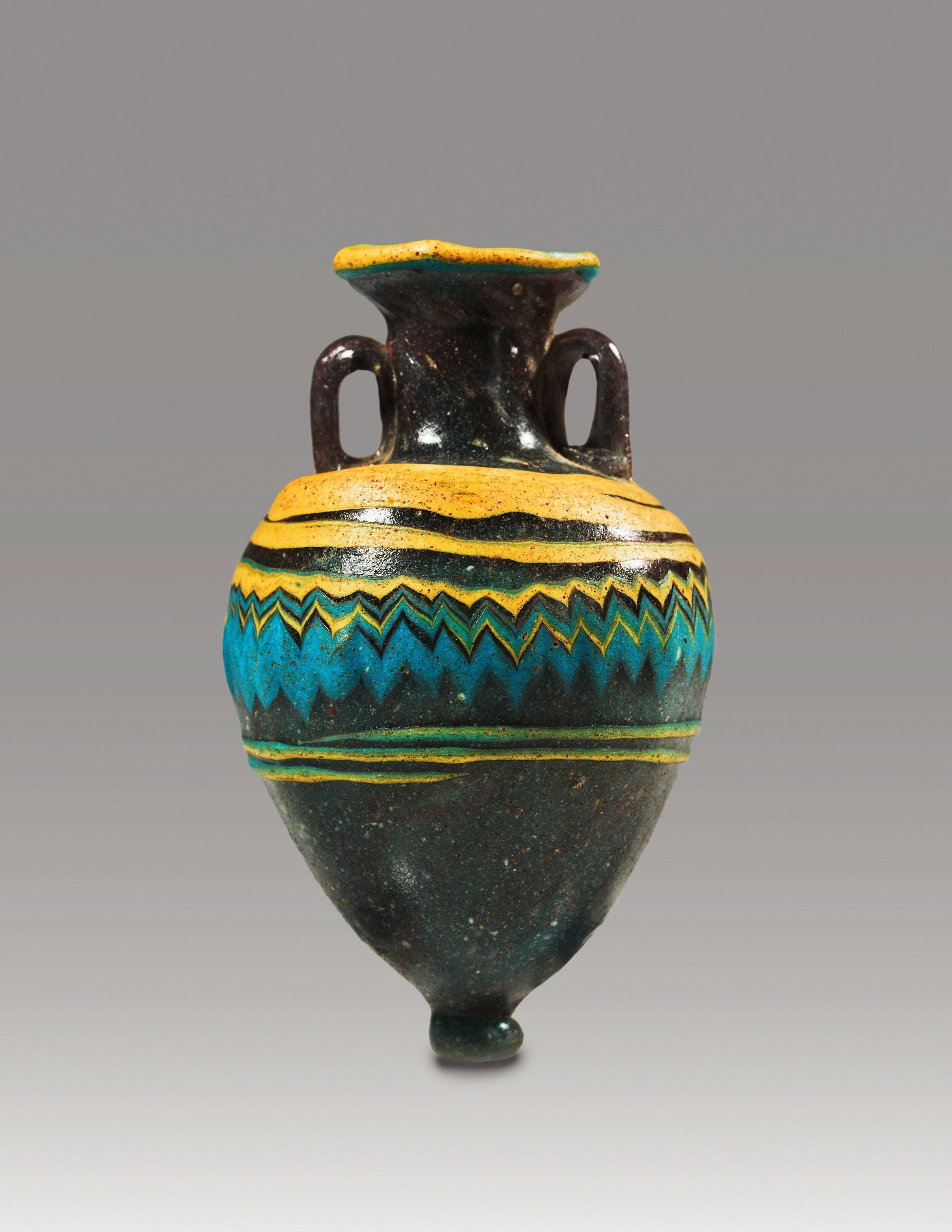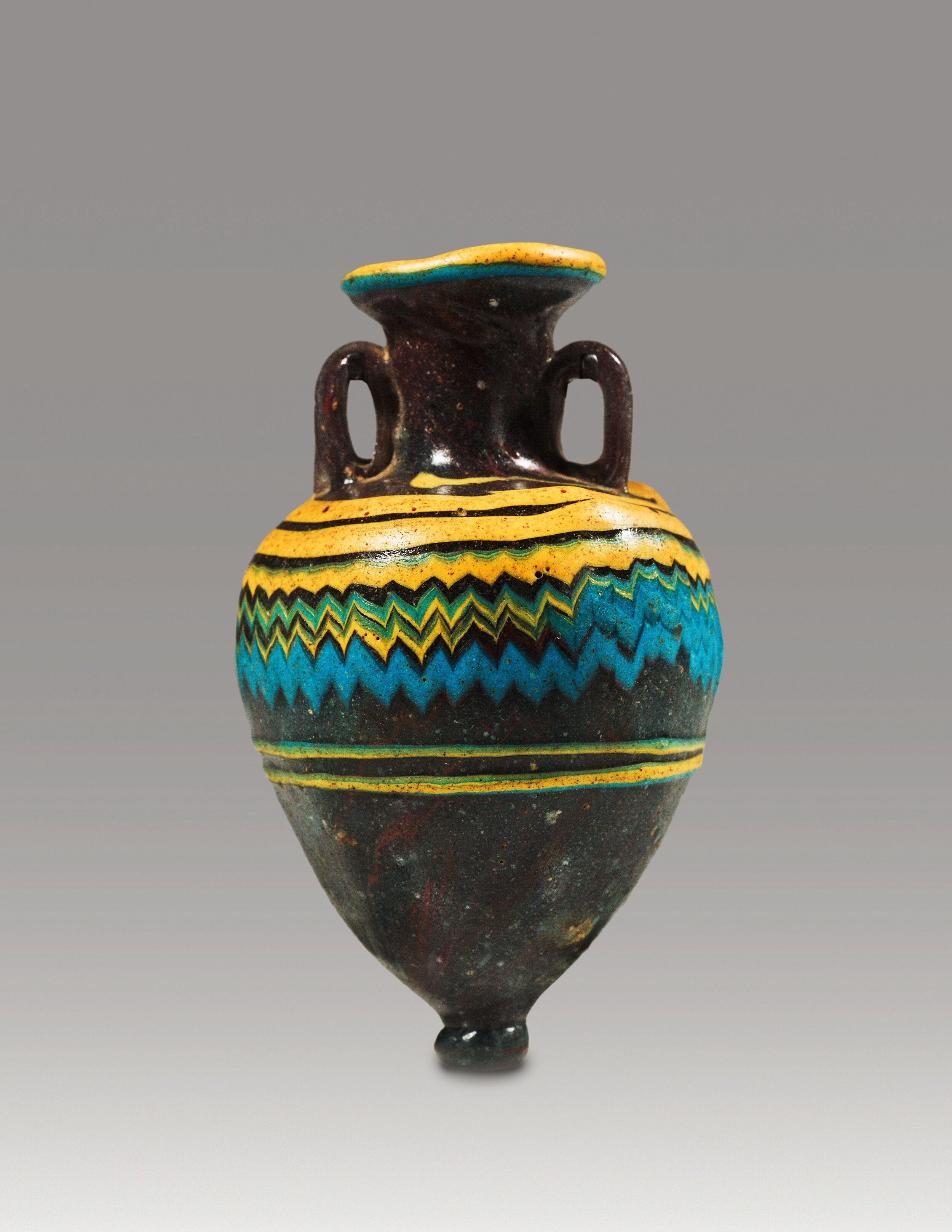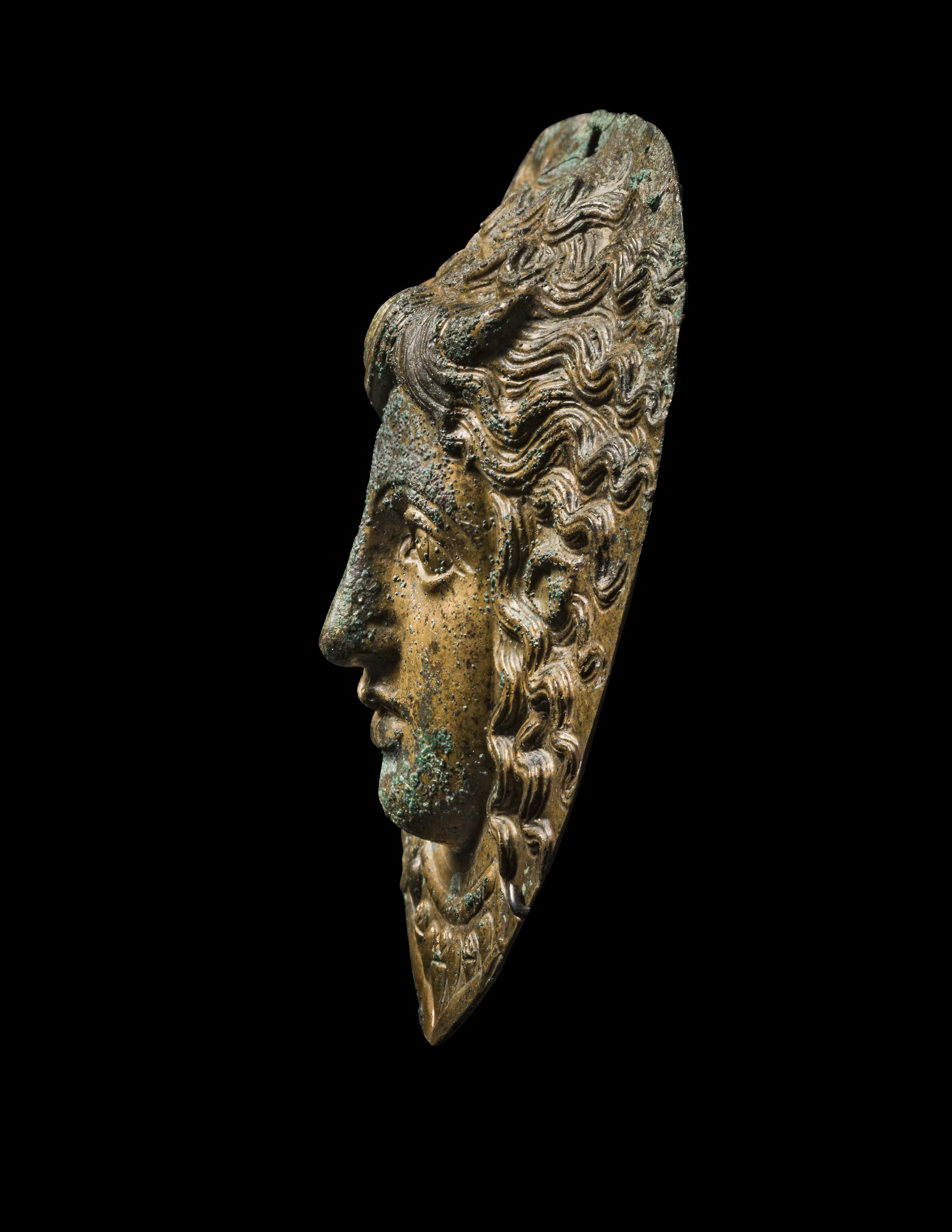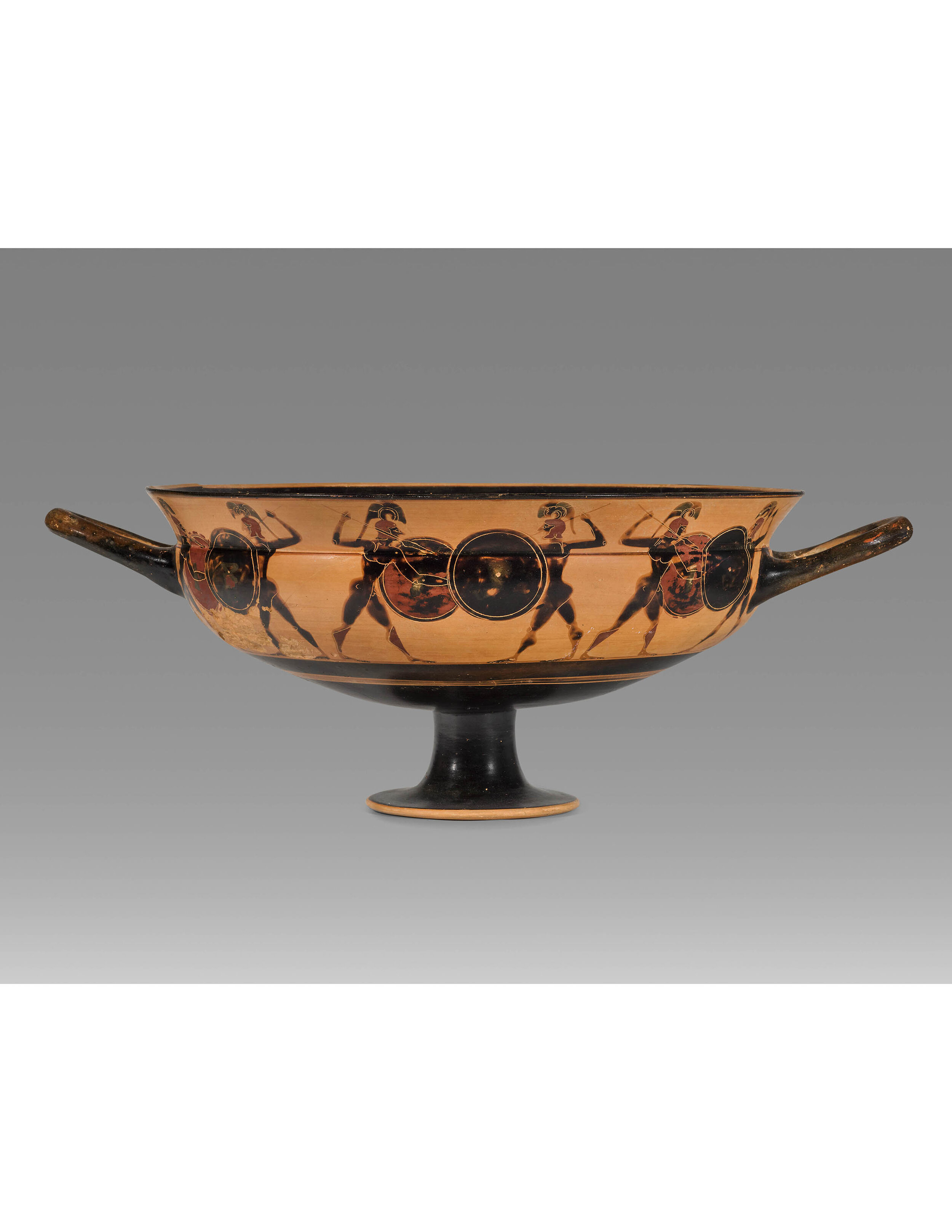Ancient Greek Tanagra Terracotta Draped Female Figure
Ancient Greek Tanagra Terracotta Draped Female Figure
Greek, Boeotian, Tanagra, 4th - 3rd century B.C.
Terracotta, white slip and pink pigment
H: 21 cm (8.2 in)
Serial: 31554
The statuette represents a young woman dressed in a long chiton reaching to her feet, over which she wears a large, loosely-draped himation that covers her arms and hands entirely. The left leg supports the weight of the body, while the right one is slightly bent (the right tiptoe, barely touching the ground, is visible under the hemline of the chiton). The left arm is folded and placed on the hip, the right one descends along the body. The head is slightly turned towards the left and the gaze, somewhat melancholic, is directed downwards. Her elaborate hairstyle is arranged with the center-parted hair pulled back in a chignon. Elegant but modest, and healthy looking young woman represents the ideal of woman’s look and behavior in the Greek polis of the Hellenistic period.
In archaeological literature, this type of figurines is called Tanagrean, even when it comes to local productions of workshops situated elsewhere that Beotia. A Beotian city located not far from Thebes, Tanagra is known mainly through these terracottas, which generally come from the city necropolises. The repertory of the Tanagra coroplaths presents a wide variety of types, but the archetypal Tanagrean figurine is the young woman entirely draped, standing upright, of which many variations exist (bare-headed or veiled, with swaying to the left or to the right, with arms naked or wrapped in himation, with or without attributes, etc.). The production of these statuettes really started in the 4th century and lasted until the end of the next century: they were molded in a very refined clay often from several molds (as this one from two molds), what explains the large variation of the attested types, covered with a white slipware and with pink, light blue, red, ochre mate paintings, and sometimes gold highlights too. They are hollow and may be fitted with a small square base; the back, not always shaped and simply smooth at times, presents a round or square hole that served as a blowhole to avoid breaks during the heating process.
CONDITION
Reassembled from several fragments; some are missing on the base and around the aperture on the back of figure; traces of glue; refilling in seams; a few cracks in places; remains of white slip and traces of pink pigment; chips (hair, folds of himation, right foot); some encrustation.
PROVENANCE
Ex- Cattaui family collection, Switzerland, 1950’s-1980’s
BIBLIOGRAPHY
HIGGINS R., Tanagra and the Figurines, Princeton, 1986.
JEAMMET V., ed., Tanagra, Mythe et archéologie, Paris, 2004.
PAUL E., Tanagra Figuren, Leipzig, 1962.
Tanagras: figurines for life and eternity. The Musée du Louvre’s collection of Greek figurines, Paris, 2010.










